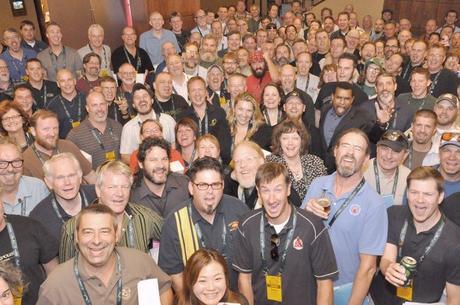
To many, the beer community is an accepting one. Despite an industry crowded by demographics skewed white and male, it still advocates to bring everyone into the fold, no matter race, ethnicity or gender identity.
But we have a problem.
As individual businesses and members of the community work to police sexist or racist actions, one of the most important organizations to help guide this collective action has, for the most part, stood quiet. Recent questions posed to leadership of the Brewers Association about how the group looks to tackle issues of gender and race were met with somewhat uninspired responses. But I understand.
The Brewers Association, representing thousands of small and independent brewers across the country, has a lot on their plate, from governmental affairs, advising in times of multinational mergers and more. As Julia Herz pointed out in our conversation, it's a matter of "pecking order."
Nononononononono. pic.twitter.com/7lMEdNy9xt
- Brew York (@brew_york) April 15, 2016
However, given the frequency of discussions around sexism and, to a lesser extent, race, it also seems like a time when leadership would be valuable in these areas. As the industry and people within the community continue to evolve, we can't be left with today's status quo.
Among the many educational seminars at this year's Craft Brewers Conference was one dedicated to analyzing demographics of beer drinkers, notably women and Hispanics. Presented by Mike Kallenberger, president of Tropos Brand Consulting, and Lindsay Kunkle, a senior consultant at The Futures Company, the program showcased data collected by the Yankelovich Monitor, America's longest running annual survey of American attitudes and values.
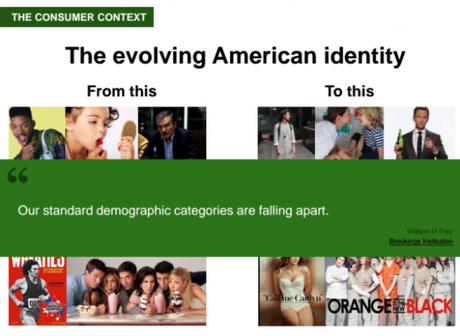
At a time when I wanted to learn more about how the Brewers Association is working to become part of an evolving conversation, I also found out what the shifting demographics of beer drinkers means.
Mike pointed out to me that now is the time you see more breweries advancing conversations around gender and race/ethnicity is because for some, "they've grown about as far as they can grow relying on the white, male audience." People of all backgrounds and identities are flocking to craft beer. They're being embraced.
"There's another, more abstract reason to project what you call a welcoming or progressive attitude," he noted. "The culture, led by Millennials, is trending toward not just accepting but actively embracing the rights of women and minorities."
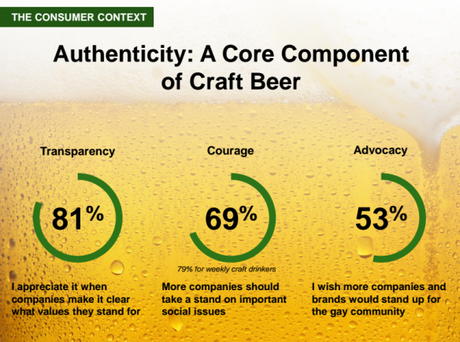
While breweries themselves find cultural and business reasons to embrace these ideals for themselves, it only makes it ever more strange the Brewers Association isn't out front. The BA isn't required to act as benevolent overlord for these issues, especially since so many member breweries are active themselves, but a lack of guidance or acknowledgement feels off when "authenticity" of its members on social issues isn't met with any tangible or visible agreement from the top.
Take, for example, this year's James Beard Award winner in journalism, which chronicles the search to understand why " there are almost no black people brewing craft beer." In his reporting, Dave Infante notes that the Brewers Association doesn't keep records of racial breakdown of its members and neither does its sister organization, the American Homebrewers Association. Julia Herz did tell me that both organizations have discussions about topics of gender and race among members.
But in the story, we meet people like Annie Johnson, a black, female homebrewer who has been named American Homebrewers Association's Homebrewer of the Year and winner of Pilsner Urquell's Master Homebrewer Competition:
"I tried for the longest time to break into the brewing world," she told Infante. "I applied to several dozen different local breweries, and breweries that were out of state, and I got nothing. Crickets, chirping at a field." She was consummately chipper in the hour we spent on the phone, but in this one moment, her voice turned glum.
In a strange way, have we as a beer community become more interested in promoting the benefits of product diversity over human diversity? We're very interested in "what's the next IPA?" or "what's after sours?" (both questions I heard multiple times at last week's Craft Brewers Conference, where one account noted eight total people of color from U.S. breweries) but few within the industry seem to be asking out loud, in public forums, "what do we need to do to bring in more women and minorities?" or "what can we do to stop peers from objectifying women?"
Last year in Indiana, the Brewers of Indiana Guild, a non-profit trade group for in-state breweries, refused to even acknowledge rampant sexism displayed by some of its members. One board member noted it wasn't worth wading into addressing the issue: "I believe we should ignore it, because it is not even close to being the biggest issue on our plate ... why are we wasting time on this at all? ... issues like this need to be prioritized, and right now this need not be a priority."
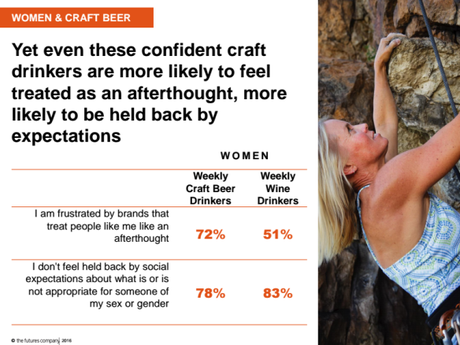
Across other industries, you find engagement in trying to recruit, raise interest and retain women and minority participants, whether that's sports, education, business or STEM fields. But in a community with a long history of issues around race and gender, the leading trade organization is mostly quiet, although they clearly support groups like the Pink Boots Society and have used CraftBeer.com as a platform to highlight disparities.
Culturally, there are far more factors at play, including - as pointed out here - questions of capital, both socially or financially. As I noted last year, " 78 percent of craft beer drinkers have a household income of more than $50,000, and the majority - 60 percent - make more than $75,000." Typically, these financial gaps relate to racial ones as well.
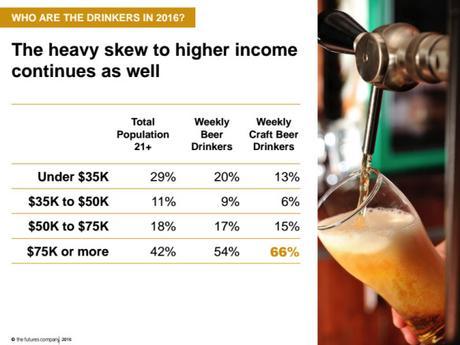
As with all luxury goods, there's a barrier for entry. As Jeff Alworth notes, craft beer offers a white, Euro vibe.
But that doesn't mean there isn't opportunity, especially through a diverse range of price points for beer. While non-defined "craft" requires less financial commitment, that doesn't mean there shouldn't be an effort to bring those earning less into the fold, especially if that means making beer as a whole a little less white and male. After all, these kinds of conversations aren't going away.

They're only going to continue, perhaps with greater frequency.
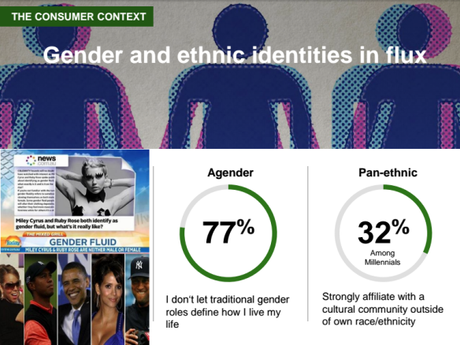
Which is why now is the time - even among pushes for tax regulation, fairness in distribution and more - the Brewers Association should consider getting in front of these topics. Beer lovers obviously connect with breweries when they stand up for what is socially and consciously right, so wouldn't it be a boon to the BA and its support to see leaders address problems at hand and move beyond translating manuals and journals into other languages as a sign of support?
I admit, these are murky political waters with which I am not well versed and in the know, and there is perhaps expected levels of decorum when it comes to wading into the deep end. But on matters of leadership, sometimes you have to dive in.
Related:Bryan Roth
"Don't drink to get drunk. Drink to enjoy life." - Jack Kerouac

